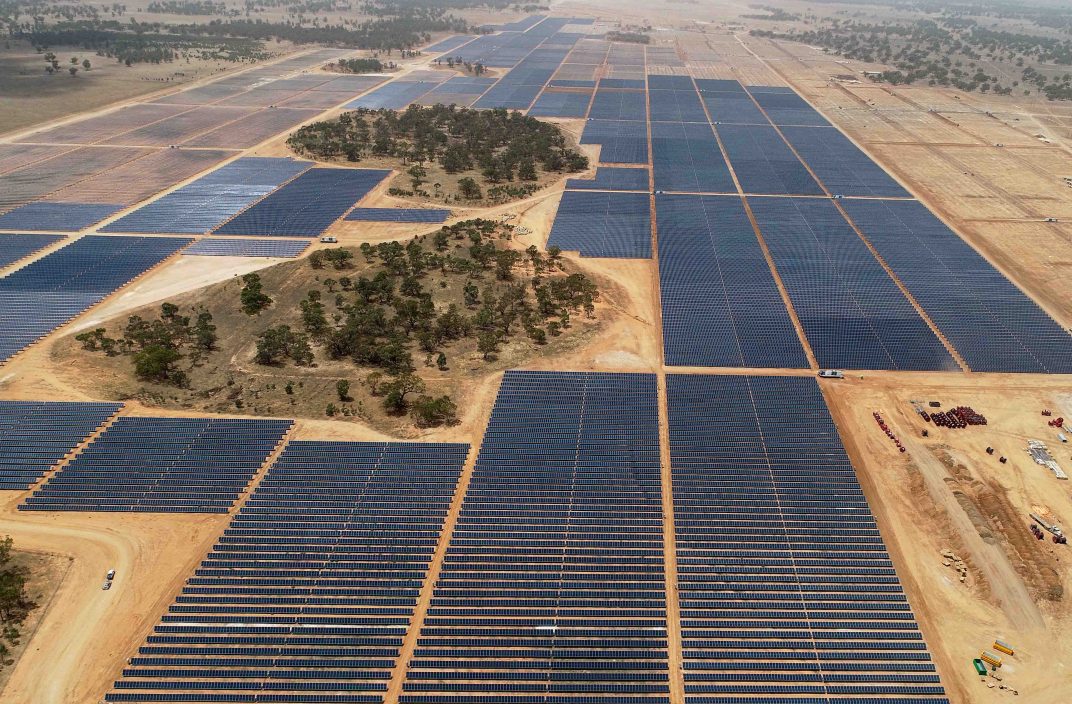Octopus Australia’s two new funds, one for institutional investors and the other for wholesale investors, will provide funds for a multi-billion-dollar Australian renewable energy portfolio. Octopus says it currently has a secured portfolio of $3 billion across wind, solar and storage, with a visible pipeline for an additional $5 billion.
The platform for institutional investors, named the Octopus Australia Sustainable Investments (OASIS) Fund, has already secured a $75 million commitment from the Commonwealth government’s Clean Energy Finance Corporation (CEFC), as well as from superannuation fund Hostplus and Octopus Renewables’ Sky Fund, backed by European institutional investors.
Alongside the second fund for wholesale investors, named Octopus Renewable Energy Opportunities (OREO), the platforms are set up to manage Australia’s energy transition and will finance the entire renewable energy life cycle from development, through construction and into long-term operations, Octopus Australia says.
The first project jointly acquired by the OASIS and OREO funds is the the 333 MW Darlington Point Solar Farm, Australia’s largest operational solar project. Located in the south east of NSW, Octopus previously jointly held Darlington Point Solar Farm with Edify Energy.
Octopus Australia says it will announce further information on its next acquisitions shortly.
Octopus Investments Australia is owned by the UK-based Octopus Group, which manages 3 GW of renewable energy assets worth over $6.9 billion (£4 billion) across nine countries.
Its funding announcement comes just a week after José Manuel Entrecanales, chairman of Spanish energy and construction giant Acciona, outlined a plan to invest around $26 billion in Australian renewables following our change in federal government.
The major investment plans from global clean energy groups hopefully indicates a renewed sense of confidence in Australia after a period of downturn attributed to policy uncertainty. Earlier this year, a report from industry body the Clean Energy Council found the level of financial commitments for new large-scale renewable energy projects in Australia had fallen more than 17% from $4.5 billion in 2020 to $3.7 billion in 2021.
“This significant reduction is due to continued policy uncertainty combined with the challenges associated with connecting renewable energy projects to the grid,” CEO Kane Thornton said.
With the election of a new federal government in May, it would appear the global thermometer on Australia’s attractiveness is warming.
Inside the country, the trend towards clean energy investments for superannuation funds continues.
Hostplus, which has $86.6 billion in funds under management as of June 2022, has previously worked with Octopus Australia and the CEFC, committing to be one of the first major investors in the development of its Gippsland Renewable Energy Park project, which is seeking to install solar, battery storage, wind and potentially green hydrogen to replace the capacity lost when EnergyAustralia’s nearby Yallourn coal power station closes in 2028.
Hostplus CEO David Elia also noted the superannuation fund is particularly eager to support Desert Springs Octopus, a joint venture between Octopus Australia and Indigenous-owned renewable energy company Northern Territory Indigenous Business Network announced in February this year.
Desert Springs Octopus is seeking to bring renewable energy and other infrastructure opportunities to First Nations Australians, with Octopus Australia’s former Investment Director of Energy Markets, Lumi Adisa, telling pv magazine Australia the joint venture is an opportunity for Octopus to learn from Indigenous communities and their wealth of knowledge on sustainability within different Australian landscapes.
Octopus Australia is currently building the 180 MW Dulacca wind farm, which is acquired from RES in August last year. It is also working with the CEFC to develop the proposed 60 MW (AC) Perry Bridge solar farm and 80 MW (AC) Fulham solar farm both in the Gippsland region of Victoria, as well as the Blind Creek solar-storage hybrid power plant in the NSW southwest.
This content is protected by copyright and may not be reused. If you want to cooperate with us and would like to reuse some of our content, please contact: editors@pv-magazine.com.









5 comments
By submitting this form you agree to pv magazine using your data for the purposes of publishing your comment.
Your personal data will only be disclosed or otherwise transmitted to third parties for the purposes of spam filtering or if this is necessary for technical maintenance of the website. Any other transfer to third parties will not take place unless this is justified on the basis of applicable data protection regulations or if pv magazine is legally obliged to do so.
You may revoke this consent at any time with effect for the future, in which case your personal data will be deleted immediately. Otherwise, your data will be deleted if pv magazine has processed your request or the purpose of data storage is fulfilled.
Further information on data privacy can be found in our Data Protection Policy.